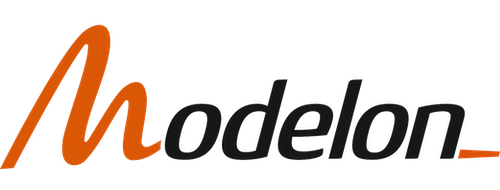Modelon AB Interim report Q1 2025
Improving EBIT and positive cash flow in Q1
Jan - March Highlights
- ARR amounted to MSEK 59.9 (53.1), an annual growth of 13%.
- Net revenue amounted to MSEK 20.4 (18.3), of which software revenue was MSEK 15.1 (13.5).
- Cash flow from operations amounted to MSEK +3.0 (-4.1).
- Adjusted EBIT1 amounted to MSEK -8.3 (-14.4).
- Operating expenses were MSEK 29.6 (33.9), including non-recurring items of MSEK 0.0 (0.0) and development costs of MSEK 10.6 (14.8).
- Net profit amounted to MSEK -9.0 (-14.2).
- Earnings per share amounted to SEK -0.52 (-1.29) before dilution.
Comments from the CEO
Business update
Revenues in the first quarter of 2025 amounted to 20.4 MSEK, 12 percent higher than in the same period last year. Annual Recurring Revenues (ARR) were 60 MSEK, an increase from last year of 13 percent. Modelon Impact ARR grew 38 percent over the same quarter last year, while our multi-platform business declined. In the current uncertain macroeconomic environment, we have some customers that have delayed investment decisions, which has had a negative impact on our order intake and annual recurring revenue growth. We expect this trend to continue at least during the second quarter.
Operating profit in the quarter was -8.3 MSEK, which is significantly better than the previous year (-14.4 MSEK). The improvement is the result of increased software revenues combined with a lower cost base. As expected, we see positive effects of the efficiency program that was announced and executed in October 2024.
Cash flow from operations improved to 3.0 MSEK (-4.1 MSEK), driven by lower costs and new contracts signed at the end of 2024. The first quarter normally has a stronger operating cash flow than subsequent quarters, due to the timing of pre-paid software licenses. That Q1 2025 was the first quarter with positive operating cash flow since 2021 is an indication that we are on the right track towards consistent positive cash flow.
Customers
During the quarter, we added to the list of companies that have selected Modelon Impact, our platform for system simulations. I am pleased that a second large North American cloud service provider will use our software for data center climate control. This is a fast-growing market where advanced cooling solutions are needed to handle new computer server generations. We also won a deal with a global logistics company that will use Modelon Impact to optimize the energy consumption of its transport vehicle fleet. We closed a new contract in Oceania with a regional leader in food processing that will use Modelon Impact for improving energy efficiency. These three examples are in different industries but share a common ambition to accelerate innovation using Modelon’s simulation platform.
Products
New customers often start with a few pilot users to create simulation models and build experience. In the next step, they look for wider deployment of simulation technology and results. During the quarter, we released a new feature in Modelon Impact called Analysis View. This enables customers to extract value from their simulations faster and more easily by viewing and comparing results in a user-friendly interface. For Modelon, the new feature means opportunities to grow the business with existing and new customers.
Artificial Intelligence (AI) creates new opportunities for Modelon and we are adding AI-enhanced customer features to our product. The German research program PHyMoS (Proper Hybrid Models for Smarter Vehicles), where Modelon participates, uses Modelon Impact for training and generating Neural networks as so-called reduced order models (ROM). These are faster but less accurate than physics-based models and can be used to quickly cover a wide range of simulation parameters. We have released NN-support in our software and are working with customers to explore neural networks as an enhancement to traditional simulations.
Modelon’s simulation libraries have been built over many years by domain experts, e.g., in thermo-fluid, energy, electric, and battery systems. During the recent quarter, we added new models and features, including solid oxide fuel cells as well as ice and frost capabilities for heat pumps. Our libraries contain simulation models that can be modified and adapted to the specific needs of customers, thanks to the Modelica standard. The breadth and openness of our library suite is a differentiator and very difficult for competitors to replicate.
More information about recent product releases can be found on our home page, modelon.com/news-blog/.
Summary and outlook
The first quarter of 2025 showed growth in software revenues, a reduced operating loss, and the first positive operating cash flow since 2021. We won deals with companies that decided to use Modelon Impact for developing new solutions, faster and better than what they did with traditional prototyping.
However, we also saw customers that delayed investment decisions in simulation technology. Short term, we expect this to have a negative effect on our ARR growth and we are ready to implement further efficiency measures to minimize the effect on profitability and cash flow.
Longer term, we are confident that our broad customer base, global market presence, and high relevance for multiple industry segments create a solid foundation for growth. Our ambition is to grow recurring revenues and operating profits based on leadership in physics-based system simulations, and we are convinced that our products support customers’ competitiveness and flexibility, also in a changing macroeconomic environment.
Jan Häglund, CEO Modelon
Lund, April 30, 2025
Investor presentation
Modelon invites investors to a presentation of the Q1 interim report at 10.00am CET on April 30, 2025. CEO Jan Häglund and CFO Jonas Eborn will present the Q1 earnings in a webcast.
The complete Q1 interim report is attached to this press release and is also made available on the company webpage: http://www.modelon.com/investor-relations/#FinancialReports.

